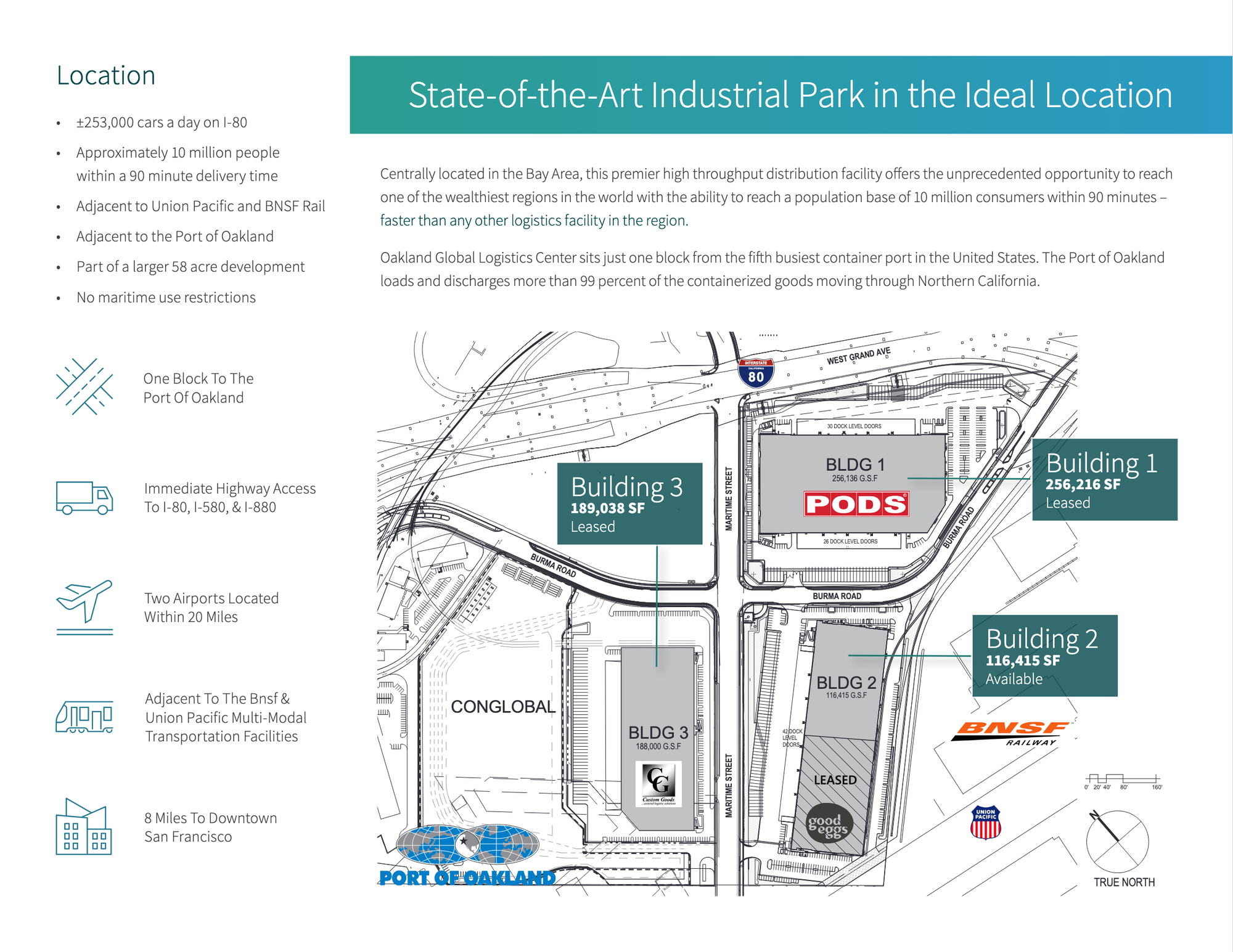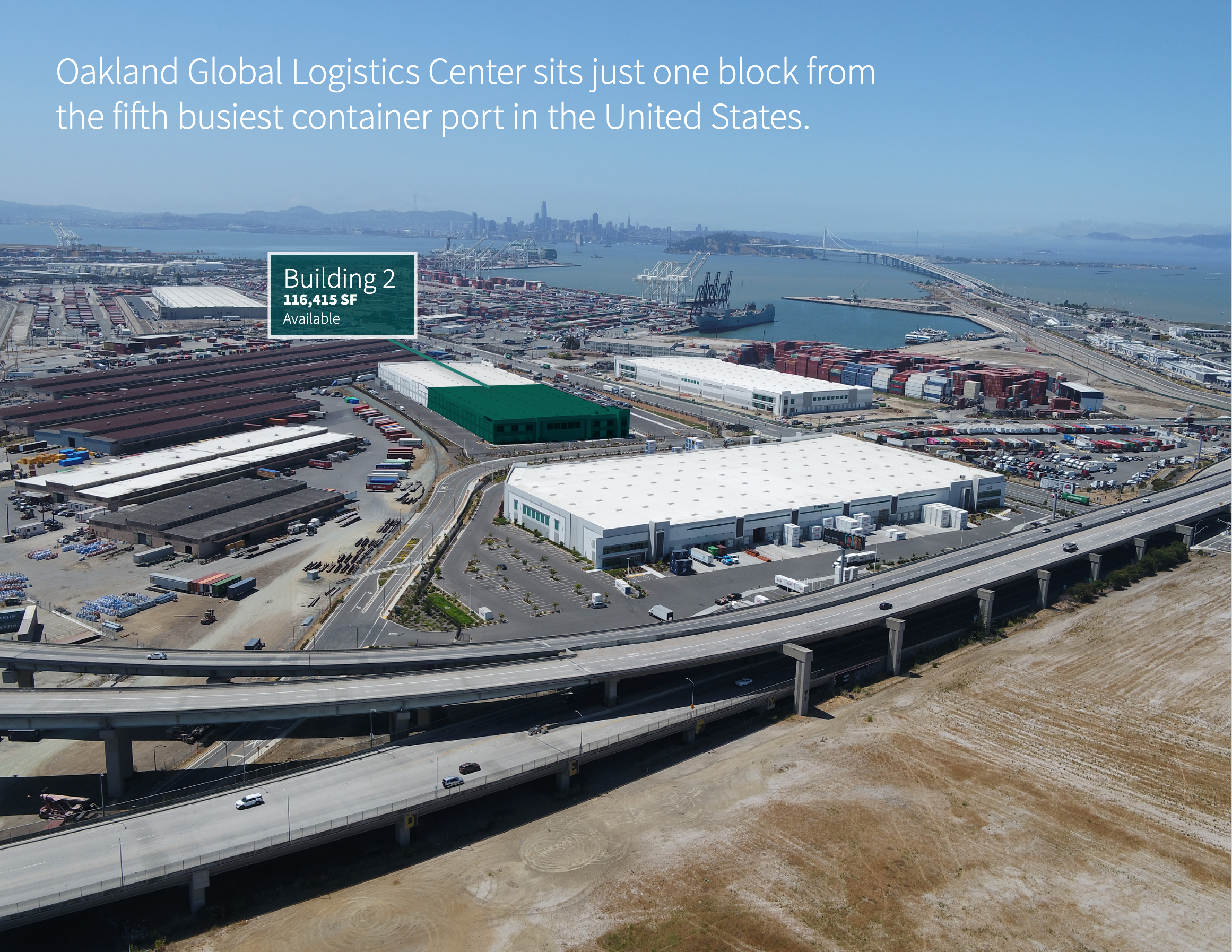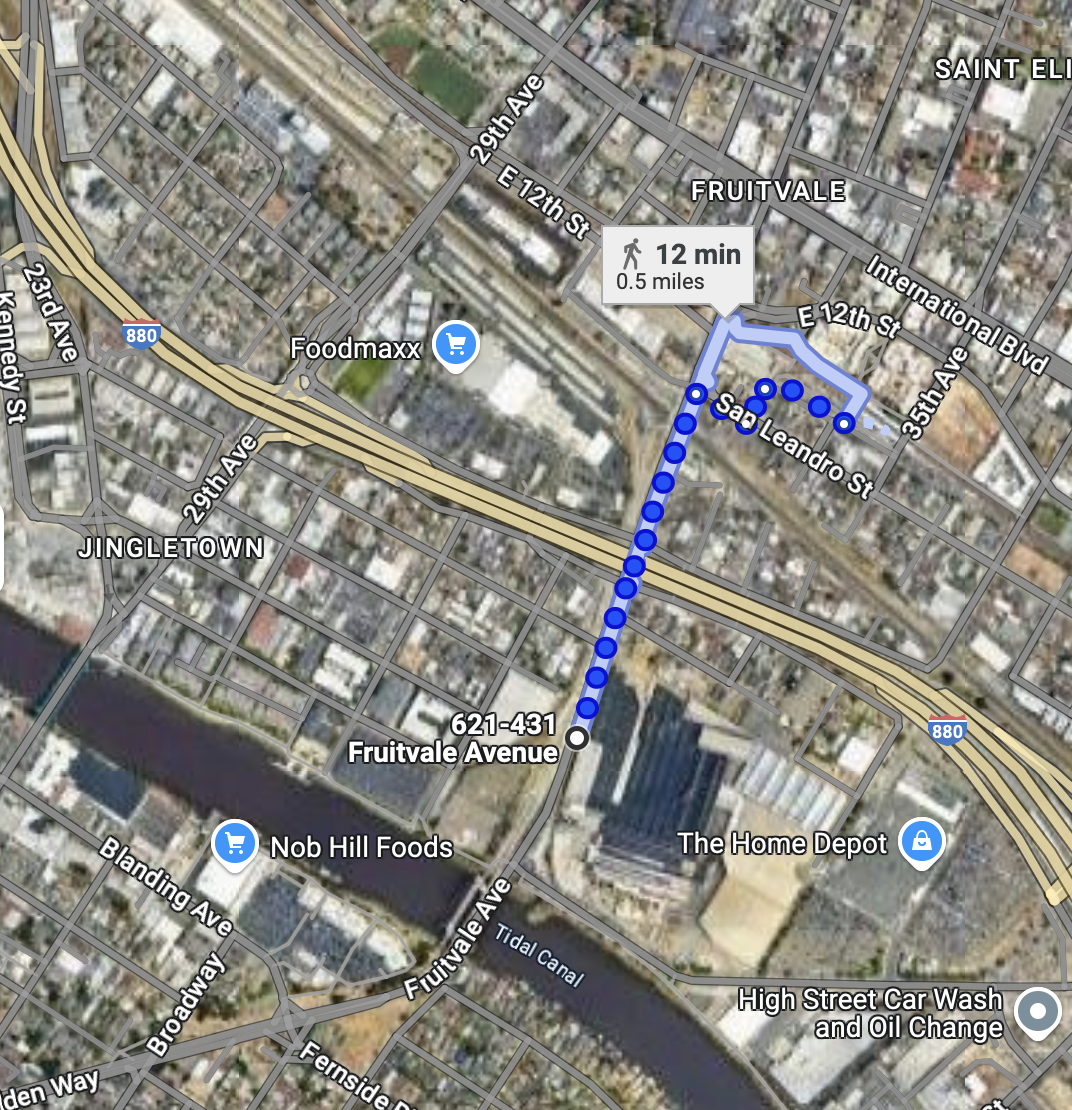That said, this particular blog post isn't going to touch on the national situation. Unlike those on social media with the "poster's disease" or the Professionally Smart People with semi-weekly columns in The New York Times, I won't claim to have anything useful to articulate, at least at this moment. Anyway, here's a blog post riffing about land-use...
As my kids zonked out in the rear seats as I drove them home from West Oakland on Sunday, I listened to music from the '00s and thought about warehouses.
Fifteen-odd years ago, I lived in a warehouse in West Berkeley and occasionally went to concerts in warehouses in West Oakland. Now, here I was taking my own kids to a birthday party in a warehouse — a warehouse that had been recently renovated into a combo arcade/bouncy house/climbing wall/party place.
The one constant: warehouses.
Those of us who care about cities like to talk a lot about housing (and the lack of it). We also like to talk about mixed-used neighborhoods and mixed-used buildings, where people live alongside retail (oftentimes stores selling succulent plants and/or coffee) and offices (oftentimes the sort of offices that feature sit-stand desks). Or we now debate about whether people should be forced to use their computers in those offices or be freed to use their computers from home. But we don't talk as much about warehouses.
Warehouses for logistics
This ad for the Prologis facility by Interstate 80 is a decent overview of how East Bay warehouses are used for logistic purposes:


Buy some good made cheaply in mainland China, ship them across the ocean to the Port of Oakland, move them through this warehouse, and then onward to the "10 million consumers within 90 minutes"!
Or — in the case of Good Eggs, which leases half of one of these Prologis warehouses — buy loaves of crusty bread from Berkeley, glass bottles of milk from Marin County, and produce from the Central Valley, and deliver it at a massive markup to FAANG PMs working from their homes across the Bay Area.
Have you seen the industrial site at the base of Fruitvale Ave that's currently being deconstructed? It's the former Owens-Illinois Glass Factory — and it's currently being turned into yet another large Prologis-owned warehouse:

If you're wondering what amounts of truck traffic this warehouse is expected to produce, here's the draft environmental impact report with appendices for the project — it's 1,019 pages in length!
Warehouses instead of housing
On the one hand, Fruitvale and I-880 is a reasonable location for a logistics facility. It's right next to a freeway.
On the other hand, imagine how this neighborhood could have been transformed if the City of Oakland re-zoned the glass factory for medium-density residential/mixed-use (like Brooklyn Basin further west):

This site is so close to BART. It's right next to the residential streets of Jingletown along the estuary. It'll have a new cycletrack to bike straight down to the Cross Alameda Trail (when those contractors finally finish the final steps of the Fruitvale Alive street improvement project). A massive housing development with mixed income levels would bring some very welcome energy to the fortified Home Depot complex next door.
That brings back fond memories of the gymastics place I went to for birthday parties by the baylands in Palo Alto — also in a former warehouse.
However, the City of Oakland disagrees with allowing housing along its entire waterfront. Enough city stakeholders and leaders have decided multiple times to retain an industrial focus along its waterfront, with the goal of retaining the type of jobs associated with these facilities.
But whereas those jobs were at one time making glass in this massive facility along Fruitvale Ave (or making cookies at Mother's Cookies), now 60% of the ~31 million square feet of industrial properties in Oakland's "industrial lands" are warehouse and distribution centers (according to the City of Oakland's recently commissioned Economic Analysis of Oakland's Industrial Lands). These days, the "industrial lands" are primarily about storing and moving goods, not making them.
Warehouses as housing
The warehouse where I lived in West Berkeley was posh by "warehouse" standards. It was actually an old Victorian house around which cinder block walls had been built, extending the building out to the property line. So we had the best of both worlds, in terms a house with heating and a kitchen, plus places for artists to make messes (or to slowly write a dissertation, in my case). Some of the windows of the old house looked out to the outside, while others looked over a factory floor of sorts.
I was long gone from that house-warehouse and no longer went to concerts in other warehouses in 2016, when the Ghost Ship fire took 36 lives in a warehouse of much more complexity in Fruitvale.
Then again, I vaguely recall watching the made-for-TV movie "Miracle on Interstate 880," which was perhaps more or less the same thing.
More warehouses coming
Looking for a warehouse to manufacture something?
Each day I go to my office by the Park Street Bridge, I've been watching a warehouse across Blanding Ave be transformed into the "Nautilus Innovation Park":

While Oakland's industrial water front is shifting to delivery logistics, there are decent odds that this Alameda facility will house a company attaching LiDAR rigs to cars, a company developing a novel cancer treatment, or a company crafting cannabis-infused bonbons at scale. (I'm just speculating based on other businesses that operate or request permits in Alameda. Anyway, how might Lucy and Ethel do working at a cannabis-infused chocolate factory?)
The City of Alameda is also leasing out hundreds of thousands of square feet of hanger/warehouse at Alameda Point.
Compare the $27 per square foot (per year) that the Nautilus Innovation Park building is asking to the $15 per square foot (per year) that Alameda Point Building 11 is asking:

Perhaps the former is the equivalent to my posh house-warehouse in Berkeley, while the later comes with an older vintage of building. Then again, that's not an apples-to-apples comparison, since the Blanding Ave facility is being listed and priced in smaller portions, while Building 11 appears to be listed in its entirety. (Typically the larger the space, the lower the per-square-foot cost.) In any case, if you want to lease either warehouse, call up Cushman & Wakefield, since they're representing both.
Here's to hoping this current City Council, with two newcomers, is a more straightforward and responsible steward of the city's property and finances.
Warehouses for flexibility
Warehouses provide what some other types of structures cannot: flexibility.
On the downside, this means that we're sometimes asking too much of warehouses. With decades of under-building on houses/duplexes/apartments/condos, people turn to whatever options they can — including warehouses that may not be fully fit for habitation. And landlords in walkable business districts too often leave their storefront properties vacant, waiting for ideal chain tenants, while forcing creative businesses and non-profits to go find warehouses in random auto-oriented spots.
On the upside, all these warehouses do provide the flexibility to keep the ever-changing urban agglomeration of Bay Area running:
- The indoor play place where I took my kids for that birthday party opened last year. I imagine many of these places went out of business back in 2020, and it's only more recently that Bay Area parents are again sending their kids to sneeze on each other while running around warehouses. (That said, no ball pit at this new play place; maybe they are learning about where the germs are hardest to wipe away each evening.)
- As my young kid has gotten into fish over the last couple years, we've found ourselves driving to a warehouse in West Oakland that also opened during the pandemic and is now perhaps the East Bay's larger supplier of freshwater fish.
- And at my own work, when we signed a new office lease as the pandemic receded, we then went down to buy furnishings from a large warehouse in Hayward, where a guy stocks lightly used Steelcase and Herman Miller office chairs that he purchases in bulk from failed tech companies and sells to new tech companies.
Whatever the next economic and cultural changes bring, warehouses will likely have flexibility to adapt...